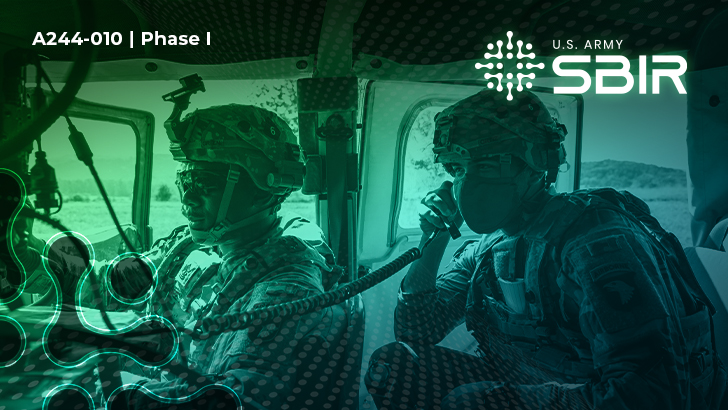

Objective
The U.S. Army seeks to develop a small, energy-efficient and self-contained transceiver that can wirelessly communicate between two points up to 300 meters away without using the traditional radio-frequency transport medium. Through an NRF-TAC solution, the Army wants a non-standard means of signal communication, such as magnetic, acoustic or infrared, that is difficult to detect and report in an environment of highly covert activity. The utilization of the Non-Radio Frequency Transceiver Alternative Communicator (NRF-TAC) will enable new mission deployment possibilities for the operation and control of remote sensors.
Description
The Army needs to operate unattended NRF-TAC, efficiently and effectively, in environments with high mobile activity that require the ability to remotely communicate on-demand with a small Size, Weight, and Power (SWAP) profile. The signal communication medium can include magnetic, acoustic, infrared or ultraviolet. The messaging between NRF-TAC devices must resist interference, detection and exploitation to ensure consistent and stable operation.
The NRF-TAC must be self-contained (i.e., require no external cabling), man-portable, easily concealable and field- programmable. The NRF-TAC must also be able to operate for at least 800 hours without operator intervention. The Army SBIR solicitation will focus on designing and building an innovative NRF-TAC prototype device capable of realistic field application. This solicitation aligns with several Army efforts, including smart sensing, while providing an alternate means of low probability detection and low probability interception communications.
Phase I
Phase II
Phase III
Submission Information

References:
Objective
The U.S. Army seeks to develop a small, energy-efficient and self-contained transceiver that can wirelessly communicate between two points up to 300 meters away without using the traditional radio-frequency transport medium. Through an NRF-TAC solution, the Army wants a non-standard means of signal communication, such as magnetic, acoustic or infrared, that is difficult to detect and report in an environment of highly covert activity. The utilization of the Non-Radio Frequency Transceiver Alternative Communicator (NRF-TAC) will enable new mission deployment possibilities for the operation and control of remote sensors.
Description
The Army needs to operate unattended NRF-TAC, efficiently and effectively, in environments with high mobile activity that require the ability to remotely communicate on-demand with a small Size, Weight, and Power (SWAP) profile. The signal communication medium can include magnetic, acoustic, infrared or ultraviolet. The messaging between NRF-TAC devices must resist interference, detection and exploitation to ensure consistent and stable operation.
The NRF-TAC must be self-contained (i.e., require no external cabling), man-portable, easily concealable and field- programmable. The NRF-TAC must also be able to operate for at least 800 hours without operator intervention. The Army SBIR solicitation will focus on designing and building an innovative NRF-TAC prototype device capable of realistic field application. This solicitation aligns with several Army efforts, including smart sensing, while providing an alternate means of low probability detection and low probability interception communications.
Phase I
Phase II
Phase III
Submission Information
References:
